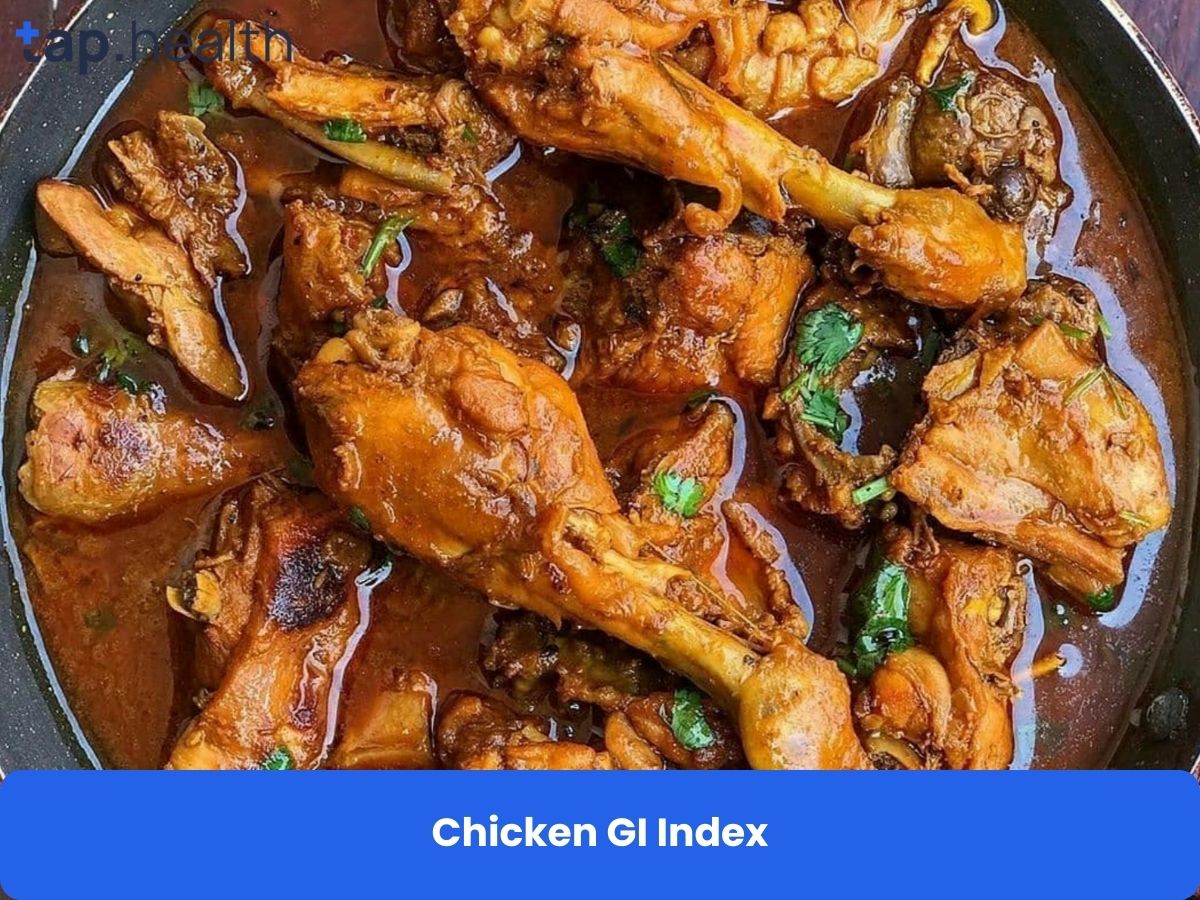If you have been to a grocery store recently, you have probably noticed a change. The shelves that used to be full of just white rice and wheat are now crowded with “Superfoods.”
The biggest name in this superfood revolution? Millets.
Doctors recommend them. Nutritionists love them. Your grandparents probably ate them. But if you have diabetes or are trying to lose weight, you might be confused. There are so many types—Ragi, Jowar, Bajra, Foxtail, Barnyard.
You might be asking: “Are they all good for me?” or “Which one has the least sugar?”
Here is the truth: Not all millets are created equal. Some are excellent for blood sugar control, while others are just “okay.”
To help you make the right choice, we have created the ultimate Millets Glycemic Index Chart. We are going to keep this guide simple (the KISS method), free of confusing medical jargon, and packed with the facts you need to take control of your health.
What is Glycemic Index (GI)?
Before we look at the chart, let’s quickly understand the ruler we are using to measure these grains.
Think of your digestive system like a fire, and food like fuel.
- High GI Foods (70+): These are like petrol. You throw them on the fire, and WHOOSH—they burn instantly. Your blood sugar spikes rapidly. (Example: White rice, Maida, Sugar).
- Medium GI Foods (56-69): These are like wood. They burn at a steady pace.
- Low GI Foods (0-55): These are like coal. They burn very slowly and keep the fire (energy) going for a long time without a sudden flare-up.
For a diabetic, the goal is to eat “Coal Foods” (Low GI) and avoid “Petrol Foods” (High GI).
Most millets fall into the Low to Medium category, which is why they are better than rice. But let’s see which ones are the best.
The Complete Millets Glycemic Index Chart
Here is the ranking of common millets based on how they affect your blood sugar.
Note: These numbers are approximate. The GI can change slightly based on how the grain is cooked.
| Rank | Millet Name (English) | Common Indian Name | Glycemic Index (GI) | Verdict for Diabetics |
| 1 | Barnyard Millet | Sanwa / Jhangora | 41 – 50 | Excellent (Best Choice) |
| 2 | Foxtail Millet | Kangni | 50 – 60 | Very Good |
| 3 | Little Millet | Kutki | 52 – 57 | Very Good |
| 4 | Pearl Millet | Bajra | 54 – 60 | Good |
| 5 | Finger Millet | Ragi / Nachni | 55 – 68 | Good (In moderation) |
| 6 | Sorghum | Jowar | 62 – 69 | Okay (Better than wheat) |
| 7 | Kodo Millet | Kodon | 50 – 60 | Very Good |
| 8 | Proso Millet | Cheena | 50 – 60 | Good |
| X | White Rice (Reference) | Chawal | 75 – 80 | Avoid |
| X | Wheat Flour (Reference) | Atta | 65 – 75 | Limit |
Deep Dive: Which Millet Should You Choose?
The chart gives you the numbers, but let’s talk about what these grains actually do for your body.
1. The Champion: Barnyard Millet (Sanwa)
If you want the absolute lowest blood sugar spike, Barnyard Millet is the winner.
- Why: It has the lowest carbohydrate content and the highest fiber-to-carb ratio. It digests very slowly.
- Best for: People with high blood sugar spikes who need strict control. It is often eaten during fasting (Navratri) for a reason—it keeps you full without heaviness.
2. The All-Rounder: Foxtail Millet (Kangni)
This is one of the most balanced grains.
- Why: It helps release glucose steadily. It is also great for the nervous system.
- Best for: Daily use. It cooks similarly to rice and has a neutral taste.
3. The Winter Warrior: Pearl Millet (Bajra)
- Why: Bajra is a “heating” grain. It is packed with iron and fiber.
- Best for: Winter months. However, because it is often eaten with Jaggery (Gur), be careful. Eat it as a savory Roti with Ghee, not as a sweet dish.
4. The Calcium King: Finger Millet (Ragi)
- Why: As shown in the chart, Ragi has a slightly higher GI range than Barnyard millet. This is because it is often ground into a very fine powder to make Roti or Mudde.
- The Trap: Avoid Ragi Malt (porridge). Drinking Ragi raises its GI significantly. Eat it as a solid Roti or Dosa.
5. The Wheat Replacer: Sorghum (Jowar)
- Why: Jowar has a GI similar to whole wheat, but it is Gluten-Free.
- Best for: People who are gluten intolerant or have Celiac disease. If you want to lose weight, Jowar is great because it is very filling.
Why Are Millets Better Than Rice and Wheat?
You might look at the chart and say, “Jowar is 62, and Wheat is 65. That’s almost the same. Why bother switching?”
This is a great question. The answer lies in the Structure of the Grain.
1. Complexity of Starch
The starch in white rice is simple. Your stomach breaks it down in minutes. The starch in millets is “complex.” It is wrapped in tough layers of bran and fiber. Your stomach has to work very hard to break these layers. This hard work means the sugar is released slowly.
2. The Fiber Factor
- Rice: Has almost 0% fiber (it is all stripped away).
- Millets: Are packed with fiber. Fiber is the natural enemy of high blood sugar. It acts like a net, catching the sugar molecules and preventing them from rushing into your blood.
3. Micronutrients
Wheat and Rice give you carbs. Millets give you Magnesium, Zinc, Potassium, and B-Vitamins. Magnesium, in particular, is known to help improve insulin sensitivity (how well your body uses its own insulin).
Important: Cooking Changes the Glycemic Index!
This is the “secret” that most dieticians forget to tell you. The Millets Glycemic Index Chart is not set in stone. How you cook the grain changes the number.
1. Polished vs. Unpolished
This is the biggest factor.
- Unpolished Millets: These look dull and brownish. They have the bran layer intact. Low GI.
- Polished Millets: These look bright white and shiny. The bran has been removed to make them look “pretty.” Higher GI.
- Action: Always buy “Unpolished” or “Whole” millets. If it looks too white, don’t buy it.
2. Porridge vs. Grain
- Grain (Pulao/Rice style): Lowest GI. Because the grain is whole, your body digests it slowly.
- Roti (Flour): Medium GI. Grinding breaks the fiber structure.
- Porridge (Malt/Soup): Highest GI. Boiling it into a liquid makes it digest very fast.
The Rule: The more you chew, the better it is for your sugar.
3. Fermentation Lowers GI
Good news for Idli and Dosa lovers! If you make a batter out of Ragi or Millet and let it ferment overnight, the healthy bacteria eat up some of the sugars. This lowers the GI of the food. A Millet Dosa might actually be healthier than a Millet Roti!
How to Switch to Millets (Without Stomach Pain)
If you suddenly stop eating rice/wheat and start eating only millets, you might get a stomach ache, gas, or bloating. This is because your body isn’t used to so much fiber.
Follow the “Slow and Steady” method:
- Week 1: Mix 20% Millet flour with your regular Wheat Atta.
- Week 3: Increase it to 50% Millet.
- Always Soak: Millets contain “phytic acid,” which can make them hard to digest. Always soak millet grains for 6 to 8 hours before cooking. This makes them soft and easy on the stomach.
- Hydrate: Fiber needs water to move. If you eat millets but don’t drink water, you will get constipated. Drink an extra glass of water with your meal.
Glycemic Load: The Portion Size Warning
We have established that millets are low GI. Does that mean you can eat three huge bowls of Millet Pulao?
No.
We must remember Glycemic Load (GL).
- Glycemic Index = How fast sugar rises.
- Glycemic Load = How much sugar is in the bowl.
Even though millets release sugar slowly, they still contain carbohydrates. If you eat too much, the total amount of sugar will eventually pile up.
The Diabetic Plate Rule:
- 50% Plate: Green Vegetables / Salad.
- 25% Plate: Protein (Dal/Chicken/Fish/Paneer).
- 25% Plate: Millet (Roti or Rice).
Common Myths About Millets
Let’s bust some fake news.
Myth 1: “Millets are only for sick people.”
Fact: In the old days, millets were called “poor man’s food.” Now they are “rich man’s superfood.” They are great for everyone—kids, athletes, and the elderly—because they provide steady energy without the crash.
Myth 2: “Millets cause thyroid problems.”
Fact: Some millets (like Pearl Millet) contain goitrogens, which can affect thyroid function. However, this is only a risk if you eat them raw and in huge quantities. Cooking and soaking destroys most of these compounds. People with thyroid issues can eat cooked millets safely in moderation.
Myth 3: “I should cut out all grains, including millets.”
Fact: Unless you are on a strict Keto diet, you need some carbs for energy. Millets are the highest quality carbs you can choose. They are much better than cutting out grains entirely and feeling weak.
A Sample Menu Using the Chart
Here is how to use the Millets Glycemic Index Chart in your daily life.
- Breakfast: Barnyard Millet Upma with lots of peas and carrots. (Using the lowest GI grain to start the day).
- Lunch: 2 Jowar/Bajra Rotis with Dal and Bhindi Fry.
- Snack: Roasted Foxtail Millet Chiwda (instead of fried chips).
- Dinner: Little Millet Khichdi (light on the stomach).
Frequently Asked Questions (FAQ) on Millets Glycemic Index Chart
Here are answers to the most common questions about the millets glycemic index chart.
1. Which millet is best for weight loss?
Barnyard Millet and Kodo Millet are excellent for weight loss. They are low in calories and high in fiber, which keeps you feeling full for hours so you don’t snack.
2. Can I eat millets at night?
Yes, but choose the lighter ones. Little Millet and Barnyard Millet are easier to digest. Avoid heavy grains like Bajra at night, as they might cause bloating if you go to sleep immediately.
3. Is Millet Rice better than Brown Rice?
Yes. While Brown Rice is healthy, Millets generally have more fiber and minerals than even brown rice. Plus, many commercially sold “Brown Rice” brands are not truly whole grain. Millets are a safer bet.
4. Can I mix all millets together (Multigrain)?
You can, but it is better to rotate them. Each millet has different nutrients. Ragi has Calcium, Bajra has Iron, Foxtail has B-Vitamins. If you eat a different one each day, you get the full spectrum of benefits. Also, some digest faster than others, so mixing them might be hard on sensitive stomachs.
5. Why did my sugar spike after eating millet?
Check two things:
- Portion: Did you eat too much?
- Type: Did you eat “Instant Millet Noodles” or store-bought “Millet Biscuits”? These are processed foods full of Maida and sugar, with only 5% millet. Always cook whole grains at home.
Final Verdict: The Winner of the Chart
If you are looking at the Millets Glycemic Index Chart and want a simple answer, here it is:
Swap your White Rice for Barnyard or Foxtail Millet. Swap your Wheat Roti for Jowar or Bajra Roti.
By making this simple switch, you lower your blood sugar spikes, improve your digestion, and get more vitamins in every bite. It is not a “diet”—it is a lifestyle upgrade.



